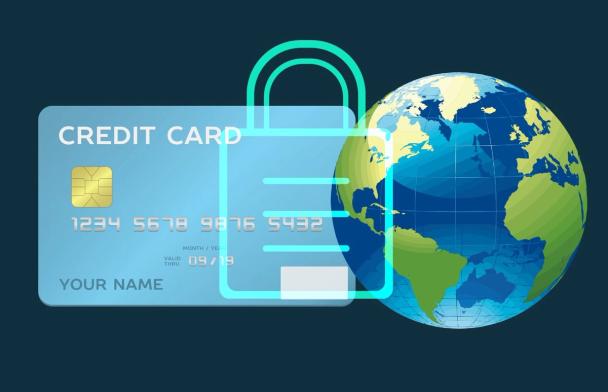How to Protect Your Business from Fraud

Every day, fraudsters invent and implement threats to prey on your business. The COVID-19 downturn worsened the situation causing dynamic fraud growth and posing even more danger to legitimate companies.
It’s high time to prepare yourself for an anti-fraud battle to prevent fraud attacks and protect your business.
Why Do Fraudsters Commit Fraud?
Beyond the obvious financial motivation, it’s exceedingly simple why fraudsters commit fraud: because they can. It’s effortless (relatively), and they may feel (and in most cases remain) anonymous and can avoid severe consequences.
Fraudsters are opportunistic and take advantage of any flaws in ecommerce security, technical issues, negligence, or ignorance. Fraud management is a weighty matter. It requires awareness, attention, and appropriate measures and tools.
It’s an ongoing, looped process involving monitoring, analysis, detection, making decisions, and implementing conclusions based on fraud cases.
Types of Fraud
Knowing what kinds of fraud your business should expect is the first step in the anti-fraud battle.The most common types of fraud are:
Credit Card Cracking or Testing
In other words: stealing credit card data. In this form of fraud, the fraudster steals or buys stolen credit card data to make purchases.
The ultimate victim is the merchant, who must refund the fraudulent payment, not to mention the cost of the product or service and possible bank chargeback fee.
Such procedures are relatively low-risk and rather insignificant. However, imagine the final impact on your bottom line once such attempts are automated and massive.
Account Takeover Fraud or Phishing
Fraudsters are real aces at tricking customers into sharing their personal details and overtaking their accounts — this is known as phishing.
As the use of social media becomes more popular, it’s important to be aware that hacking social media accounts can open doors to stealing a customer’s personal information.
Such access allows fraudsters to make unauthorized purchases, change shipping details, use gathered funds, and access other users’ accounts.
Refund Fraud
Refund fraud is another level of deception. Fraudsters use stolen credit card data to initiate purchases. Then, they claim that the purchase was accidental and request a refund from the merchant while asking the merchant to use an alternative payment method. The merchant issues a refund, but since the original credit card was not refunded, the whole amount is still due to the proper cardholder.
Affiliate Fraud
Affiliate fraud refers to fraudulent or dishonest activity conducted to generate commissions from an affiliate marketing program.
In layman’s terms, affiliate fraud includes any activities explicitly forbidden under the terms and conditions of an affiliate marketing program.
Chargeback Fraud or Friendly Fraud
A chargeback occurs when a credit card provider demands a retailer to refund a disputed or fraudulent transaction. Chargeback fraud is when a refund is unjustified and aims to embezzle money from the merchant.
In a nutshell, due to the chargeback process, the merchant is responsible for refunding the purchase amount to the issuing bank.
Interception Fraud
This type of fraud seems legitimate until the purchase confirmation. After making a purchase, fraudsters contact the merchant’s customer care or delivery provider and change the delivery address to take over the parcel.
Triangulation Fraud
Triangulation fraud is one of the most complicated fraudulent tactics, but despite its complexity, it is still on the rise.
Triangulation fraud involves three parties: the customer, the merchant, and the “middleman.” The middleman is responsible for setting up the marketplace operation.
Triangulation fraud occurs when a legitimate customer purchases from a third-party marketplace run by the middleman (who usually offers goods at very competitive prices). Then, the middleman buys appropriate goods to fulfill the order from a legitimate merchant using stolen credit card data and the shipping information of the original customer. As a result, the customer is shipped the product by the merchant, but the money is kept by the fraudster.
An Automated Threat: Bots
Some fraud attempts may be run by bots — programs or applications designed to run automated, repeated tasks.
A benefit of bots is their speed. They can perform tasks much more quickly than a human. That said, a bots speed is simultaneously an advantage and an inconvenience. This speed and automation means that bots — if used for malicious purposes — can do serious harm to businesses, destroy their reputation, and affect their bottom lines.
Business Practices to Combat Fraud
Now that you have an understanding of the types of fraud that could impact your business, it’s important to understand that there are things that can be done to prevent it.
The battle against fraud is an ongoing process. Here are a few tips to incorporate into your business practices to prevent fraud:
- Constantly secure and monitor any sensitive data you keep on file, such as credit card data, shipping addresses, and IP addresses.
- Stay focused and attentive. Pay attention to every abnormal behavior made by your customers, as these may be the first sign of a fraud attempt.
- Be conscious of any false declines or false positives falling into identity, structural, or technical buckets. Any issues with outdated credit cards or inaccurate shipping information should activate a warning light, as they may cost you a fortune.
- Support your business with tools and solutions based on artificial intelligence and machine learning to analyze historical and live data and predict outcomes or make sure your payment gateway is equipped with such tools.
Anti-Fraud Tools You Should Adopt

In addition to incorporating the recommended business practices above to prevent fraud, it’s important to also equip your business with proper AI and machine learning tools and solutions to make it less arduous.
The following tools will help you dodge obstacles and run your business efficiently with minimal fraud.
Email Verification or CAPTCHA
CAPTCHA is an easy (and important) way to avoid automated massive fraud attacks. It stands for Completely Automated Public Turing test to tell Computers and Humans Apart.
The system helps protect you from spam and password decryption by asking your subscribers to complete a simple test that proves they are humans and not a computer trying to break into a password-protected account.
Many websites use CAPTCHA to eliminate the risk of unauthorized access entry. Such a shield is crucial when dealing with sensitive information like credit card data. It helps block bot attacks, thus protecting merchants against massive losses.
3D Secure 2
3D Secure 2 (3DS) is an authentication protocol for online card payments. This extra security layer in your checkout makes online shopping much safer, thus building company credibility and improving brand loyalty.
The sophisticated technology behind 3DS compares over 100 data points to confirm that the buyer is the actual cardholder. Without a doubt, it’s a state-of-the-art online payment authentication system that significantly enhances transaction safety and thereby remarkably improves customer experience.
Capture
Capture is the additional legally binding step that secures payment once it has been authorized. The transaction amount doesn’t reach the merchant account and funds are not captured until they confirm that the transaction has been completed.
Card Security Codes (CVV codes)
Card security codes (otherwise known as CVV codes) are the three- or four-digit numbers customers may find on the front or back of their cards.
The purpose of the CVV code is to protect both the card owner and the merchant against fraud, theft, or unauthorized transactions.
Fraudsters won’t know the code if they don’t have the physical card in front of them, which means the transaction is much more likely to be legitimate if the CVV code has been confirmed.
Fraud Blacklists
A fraud blacklist collects fraudulent historical activities containing fraudsters’ personal information, used credit card data, IP addresses, and more. Creating a blacklist can help merchants avoid fraud by blocking dodgy transactions from credit cards that have been used for fraudulent activities before.
Blacklists work by comparing current transactions against previously fraudulent transactions on the list. If a match is found, the transaction is immediately declined.
It’s important to note that the effectiveness of these lists is limited to each individual merchant’s database unless shared with others.
Address Verification Service (AVS)
AVS automatically checks the transaction billing address against the address registered with the bank. It visibly reduces the risk of fraudulent transactions; however, it isn’t 100% accurate.
In some cases, even if the billing address matches the one the bank has on file, the transaction could be declined or approved. So this tool should be used in combination with other preventative measures.
Reliable Payment Provider
It’s important to ensure that your payment provider is security-driven and always has your back when it comes to preventing fraud. A reliable payment provider will be able to precisely define fraudulent transactions and immediately flag them, thus eliminating the threat and possible losses.
Fraud’s True Price Tag
Data security greatly impacts your bottom line, not to mention your business’ reputation.
Although fraud represents a substantial source of loss for merchants, most underestimate how much is really on the table. According to the ECB’s latest report, the total value of fraudulent transactions involving cards issued in SEPA amounted to €1.87 billion in 2019, and, despite the overall slight decline of fraudulent transactions, the number of fraud attacks for CNP transactions is still on the rise.
Figures for the U.S. are also alarming. Despite slow growth in card fraud losses, totals are estimated to reach $13.73 billion by 2024 due to skyrocketing fraud for card-not-present transactions.
Unfortunately, there is no such thing as a tool that can prevent fraud 100% of the time. So, in order to maximize the efficiency of your anti-fraud and anti-chargeback approach, it’s a good idea to combine multiple automated processes with human involvement and monitoring.
Though pre-transaction prevention is challenging and requires beyond-average involvement, you should never set it aside. The key to success is to stop fraud before it happens.
The good news is that you don’t have to invest a fortune in security. A reliable and security-focused payment provider like Shift4 will have your back and provide you with all the necessary anti-fraud tools.